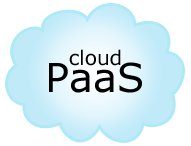 NEWS
NEWS
 NEWS
NEWS
 NEWS
NEWS
![]() The IBM Impact event this week is a clear reminder that the big enterprise technology vendors are banking on customers consolidating their data centers with the DevOps movement playing a focal role.
The IBM Impact event this week is a clear reminder that the big enterprise technology vendors are banking on customers consolidating their data centers with the DevOps movement playing a focal role.
But it’s IBM’s take that will sure to create much debate. IBM is pushing the integration of business process management and development tools with APIs to connect to apps. And it all gets wrapped into IBM’s new PureApplication System, a new age mainframe it calls “PaaS in a Box,” that combines development and virtualization environments into one box. It gives the customer what they need, namely, optimization, consolidation, a central place for apps to run with the elasticity that “cloud” provides.
“It’s all in there,” said Paul Brunet, vice president Websphere and BPM Product Manager. “It’s ideal for running cloud. It’s PaaS in a box.”
PaaS in a box? For many following the enterprise, the IBM news is a reminder of three years ago when Oracle unveiled Exalogic, which it called its “cloud in a box,” best described in an “An Ode to Oracle’s Cloud,” by Christopher Hoff back in September 2010. And I quote:
It’ll take all you can give it,
all you can muster,
It scales from one
to an eight headed clusterAt the end of the day,
from morning to nox
take comfort that Cloud
now comes in a box.
The IBM style is antithetical to the Web school that networks thousands of cheap servers into a an elastic fabric. That’s far different than building complex, honking big machines. Developers are steadfast in their support for services such as Amazon Web Services (AWS). And many providers have followed suit by offering connections into AWS as a way to offer enterprise cloud development options. CollabNet, for example, launched an end-to-end application lifecycle management (ALM) service this week that serves as an engine that can plug into Cloud Foundry, AWS and Joyent. “CloudForge,” offers a full suite of collaboration tools to go with it. It integrates on-premise and cloud environments. It’s not a big box at all. It’s software that connects to a service infrastructure. CollabNet also cites the need to couple development in the cloud with virtualized infrastructures. It helps optimize the application development process, keeping it in line with operations requirements.
IBM is making its own push to attract developers. But I doubt they will find much interest in IBM’s PureApps Systems. But that does not appear to be too much of a care for IBM, who have a deeper interest in IT.
“We have taken a lifecycle approach – not just developers but DevOps,” said IBM’s Marie Wieck in a press conference yesterday. “The role of the developer is changing because it is more iterative.”
She said it is important to understand the technology and and business trends that accelerate the demand for faster and continuous delivery. You can’t do that without an end-to-end visibility.
“We see operations people turning into infrastructure developers,” Wieck said. “It is all necessary to drive acceleration that business demands today.”
It’s this lack of end-to-end capability that has hampered PaaS adoption, Brunet said.
“PaaS has been slow to take off,” Brunet said. “Acceptance is taking more time. There are a lot more nuances. How do you marry development with virtual environments?”
Customers are coming to a juncture for how they treat application development and considering how platform-as-a-service (PaaS) will play out as a way to be more efficient in terms of both development and operations.
The trends show a deeper demand for PaaS as a way to really differentiate. The approach developed by IBM is intended to do that. But I question how IBM is conflating the term. It really is not much different than Larry Ellison calling Exadata a cloud in a box.
Support our mission to keep content open and free by engaging with theCUBE community. Join theCUBE’s Alumni Trust Network, where technology leaders connect, share intelligence and create opportunities.
Founded by tech visionaries John Furrier and Dave Vellante, SiliconANGLE Media has built a dynamic ecosystem of industry-leading digital media brands that reach 15+ million elite tech professionals. Our new proprietary theCUBE AI Video Cloud is breaking ground in audience interaction, leveraging theCUBEai.com neural network to help technology companies make data-driven decisions and stay at the forefront of industry conversations.